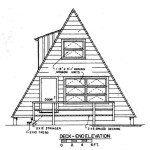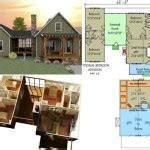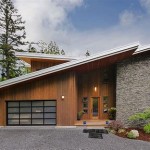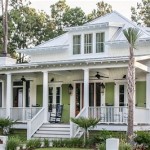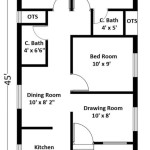Boutique house plans are meticulously crafted architectural designs that cater to discerning homeowners seeking exclusivity and personalization in their living spaces. Unlike mass-produced or cookie-cutter plans, these plans offer a unique blend of style, functionality, and attention to detail. For instance, a contemporary boutique house plan might feature a striking geometric facade with floor-to-ceiling windows, blurring the boundaries between indoor and outdoor living.
Boutique house plans go beyond mere blueprints, embodying a holistic approach to home design. They prioritize aesthetics, sustainability, and the seamless integration of indoor and outdoor spaces. Homeowners have the opportunity to collaborate with architects to customize, modify, and refine the plan to perfectly suit their individual needs, tastes, and aspirations.
Moving forward, we will delve into the intricate details of boutique house plans, exploring their unique characteristics, the design process, and the benefits they offer to homeowners seeking a bespoke and exceptional living experience.
Boutique house plans offer an array of distinct advantages that set them apart from ordinary home designs:
- Exclusivity and Customization
- Meticulous Attention to Detail
- Integration of Indoor and Outdoor Spaces
- Sustainable Design Principles
- Energy Efficiency
- High-Quality Materials and Finishes
- Collaboration with Architects
- Timeless Aesthetic Appeal
- Increased Home Value
These attributes combine to create living spaces that are not merely houses but works of art, reflecting the unique personalities and aspirations of their owners.
Exclusivity and Customization
Boutique house plans stand out for their unparalleled level of exclusivity and customization. Unlike mass-produced plans that cater to a wide audience, boutique plans are tailored to the specific needs, tastes, and aspirations of individual homeowners.
- One-of-a-Kind Designs: Boutique house plans are not simply variations on a theme; they are unique creations that reflect the homeowner’s personality and lifestyle. Architects work closely with clients to understand their vision and translate it into a cohesive and visually stunning design.
- Tailored to Specific Needs: Boutique house plans can accommodate a wide range of requirements, from the number of bedrooms and bathrooms to the size and layout of living spaces. Architects consider factors such as family size, entertaining habits, and accessibility needs to create a home that perfectly suits the homeowner’s current and future needs.
- Personalized Finishes and Details: From the choice of materials to the placement of windows and doors, every aspect of a boutique house plan can be customized to the homeowner’s preferences. This level of personalization ensures that the final product is a true reflection of the homeowner’s unique style and taste.
- Integration of Personal Collections and Artwork: Boutique house plans can incorporate spaces specifically designed to showcase the homeowner’s treasured possessions, whether it’s a collection of artwork, books, or vintage furniture. Architects work with homeowners to create harmonious and visually appealing displays that enhance the overall aesthetic of the home.
The exclusivity and customization offered by boutique house plans empower homeowners to create living spaces that are not just houses but true expressions of their individuality and aspirations.
Meticulous Attention to Detail
Boutique house plans are renowned for their meticulous attention to detail, which elevates them beyond ordinary home designs. Every aspect of the plan is carefully considered and executed to create a cohesive and visually stunning living space.
- Architectural Elements: From the intricate moldings to the placement of windows and doors, every architectural element is carefully selected and arranged to create a harmonious and aesthetically pleasing facade. Attention to proportion, scale, and balance ensures that the home’s exterior is not only visually appealing but also timeless and enduring.
- Interior Design: The interior of a boutique house plan is meticulously crafted to maximize space, functionality, and natural light. Each room is designed to flow seamlessly into the next, creating a cohesive and inviting living environment. Custom built-ins, unique lighting fixtures, and carefully curated finishes add an extra layer of sophistication and comfort.
- Outdoor Spaces: Outdoor spaces are seamlessly integrated into boutique house plans, creating a harmonious connection between the interior and exterior. Patios, decks, and balconies are thoughtfully designed to extend the living space outdoors, providing areas for relaxation, entertainment, and enjoyment of the surrounding landscape.
- Sustainable Features: Boutique house plans often incorporate sustainable features that enhance the home’s energy efficiency and reduce its environmental impact. These features may include energy-efficient appliances, solar panels, rainwater harvesting systems, and low-VOC materials, contributing to a healthier and more sustainable living environment.
The meticulous attention to detail in boutique house plans ensures that every element of the home is not only functional but also aesthetically pleasing, creating living spaces that are both beautiful and comfortable.
Integration of Indoor and Outdoor Spaces
Boutique house plans seamlessly integrate indoor and outdoor spaces, blurring the boundaries between the two. This integration creates a harmonious living environment that maximizes natural light, ventilation, and connection to the surrounding landscape.
Large windows and glass doors provide expansive views of the outdoors, bringing the beauty of nature into the home’s interior. Open floor plans and bi-folding doors allow for easy flow between indoor and outdoor living areas, creating a sense of spaciousness and openness. Decks, patios, and balconies extend the living space outdoors, providing areas for relaxation, entertainment, and al fresco dining.
Outdoor spaces are carefully designed to complement the home’s architecture and interior design. Landscaping, lighting, and water features are used to create visually appealing and inviting outdoor environments. Pergolas, trellises, and shade structures provide protection from the sun and elements, while outdoor fireplaces and fire pits extend the enjoyment of outdoor spaces into the cooler months.
The integration of indoor and outdoor spaces in boutique house plans not only enhances the aesthetic appeal of the home but also provides numerous benefits for health and well-being. Natural light and ventilation promote physical and mental health, while access to outdoor spaces encourages physical activity and reduces stress levels. The seamless connection between indoor and outdoor living creates a sense of harmony and tranquility, contributing to a more enjoyable and fulfilling living experience.
Overall, the integration of indoor and outdoor spaces is a defining characteristic of boutique house plans, creating living environments that are both beautiful and functional, promoting health and well-being while fostering a deep connection to the surrounding nature.
Sustainable Design Principles
### Energy EfficiencyBoutique house plans prioritize energy efficiency through the implementation of various sustainable design strategies. These strategies may include:- **High-performance insulation:** Walls, roofs, and floors are insulated with high-quality materials to minimize heat loss and gain, reducing the need for artificial heating and cooling.- **Energy-efficient windows and doors:** Windows and doors are designed to be airtight and thermally broken, preventing heat transfer and reducing energy consumption.- **Natural ventilation:** Operable windows and doors allow for natural ventilation, reducing the reliance on mechanical systems for cooling and air circulation.- **Passive solar design:** The orientation of the house, placement of windows, and use of thermal mass are optimized to harness natural sunlight for heating and lighting, minimizing energy consumption.### Water ConservationWater conservation is an integral aspect of sustainable boutique house plans. These plans incorporate water-saving fixtures and systems, such as:- **Low-flow toilets and faucets:** Toilets and faucets are equipped with water-saving mechanisms, reducing water usage without compromising functionality.- **Rainwater harvesting systems:** Rainwater is collected from the roof and stored in cisterns or tanks for use in irrigation, washing, or other non-potable purposes.- **Drought-tolerant landscaping:** Native plants and low-maintenance landscaping choices are used to reduce water consumption for irrigation.- **Greywater systems:** Greywater from showers, sinks, and baths is treated and reused for irrigation or other non-potable purposes.### Sustainable MaterialsBoutique house plans prioritize the use of sustainable and environmentally friendly materials. These materials may include:- **Recycled and reclaimed materials:** Materials such as wood, metal, and glass are recycled or reclaimed from other sources, reducing waste and conserving natural resources.- **FSC-certified wood:** Wood used in construction is certified by the Forest Stewardship Council (FSC), ensuring that it comes from sustainably managed forests.- **Low-VOC materials:** Paints, finishes, and adhesives with low volatile organic compound (VOC) emissions are used to improve indoor air quality and reduce environmental impact.- **Natural and renewable materials:** Natural materials such as stone, bamboo, and cork are used for flooring, countertops, and other surfaces, reducing the use of synthetic materials.### Green Building CertificationsBoutique house plans often seek green building certifications, such as LEED (Leadership in Energy and Environmental Design) or Passive House, to demonstrate their commitment to sustainable design. These certifications provide a framework for evaluating and verifying the sustainability of a building based on its energy efficiency, water use, material choices, and other factors. Achieving green building certification ensures that the house meets high environmental standards and provides a healthier and more sustainable living environment.
By incorporating sustainable design principles into boutique house plans, homeowners can create living spaces that are not only beautiful and functional but also environmentally responsible and resource-efficient. These principles contribute to a healthier and more sustainable lifestyle while reducing the environmental impact of the home and promoting a greener future.
Energy Efficiency
Energy efficiency is a cornerstone of boutique house plans, as it reduces operating costs, enhances occupant comfort, and promotes environmental sustainability. To achieve high levels of energy efficiency, boutique house plans incorporate a range of innovative design strategies.
- High-Performance Insulation
Boutique house plans prioritize the use of high-performance insulation materials in walls, roofs, and floors. These materials effectively minimize heat transfer, reducing the need for artificial heating and cooling systems. By maintaining a consistent indoor temperature, high-performance insulation enhances thermal comfort and energy savings throughout the year.
- Energy-Efficient Windows and Doors
Windows and doors are designed to be airtight and thermally broken, preventing heat transfer and reducing energy consumption. Advanced glazing technologies, such as low-emissivity (Low-E) coatings and double or triple glazing, are employed to minimize heat gain and loss. These energy-efficient windows and doors help maintain a comfortable indoor temperature while reducing heating and cooling costs.
- Natural Ventilation
Boutique house plans incorporate operable windows and doors to promote natural ventilation. Cross-ventilation strategies are carefully considered to maximize airflow and reduce reliance on mechanical ventilation systems. By allowing fresh air to circulate throughout the home, natural ventilation improves indoor air quality, reduces humidity, and provides a more comfortable living environment while saving energy.
- Passive Solar Design
Passive solar design techniques are employed to harness natural sunlight for heating and lighting, minimizing energy consumption. The orientation of the house, placement of windows, and use of thermal mass are optimized to capture solar heat during winter months and minimize heat gain during summer months. By integrating passive solar design principles, boutique house plans create energy-efficient homes that are naturally comfortable and reduce the need for artificial heating and cooling.
These energy-efficient strategies, when combined, result in boutique house plans that are not only environmentally friendly but also cost-effective to operate. Homeowners can enjoy reduced energy bills, improved indoor comfort, and a healthier living environment while contributing to a more sustainable future.
High-Quality Materials and Finishes
### Durable and Long-Lasting MaterialsBoutique house plans prioritize the use of durable and long-lasting materials that can withstand the test of time and the elements. These materials are carefully selected for their exceptional performance and ability to maintain their aesthetic appeal over the years.
Exterior materials, such as siding, roofing, and windows, are chosen for their resistance to moisture, fading, and wear. High-quality siding materials, such as fiber cement or composite cladding, provide excellent protection against weather damage and require minimal maintenance. Durable roofing materials, such as metal or slate, offer long-lasting performance and protection from the elements. Energy-efficient windows with sturdy frames and high-performance glass ensure longevity and contribute to the overall energy efficiency of the home.
### Exquisite Finishes and DetailsBoutique house plans are characterized by exquisite finishes and details that elevate the aesthetic appeal and functionality of the home. From intricate moldings and millwork to custom cabinetry and hardware, every element is carefully considered to create a cohesive and visually stunning living environment.
Interior finishes, such as flooring, wall coverings, and paint, are chosen for their durability, style, and ability to complement the overall design scheme. High-quality flooring materials, such as hardwood, tile, or natural stone, provide a luxurious and long-lasting surface that can withstand daily use. Statement walls with unique textures or accent colors add visual interest and create focal points within the home. Custom cabinetry and hardware are designed to be both functional and aesthetically pleasing, providing ample storage and enhancing the overall design.
### Sustainable and Environmentally Friendly MaterialsBoutique house plans often incorporate sustainable and environmentally friendly materials that promote a healthier living environment and reduce the ecological footprint of the home. These materials are carefully selected for their low environmental impact and ability to contribute to a healthier indoor environment.
Sustainable materials, such as bamboo flooring, recycled glass countertops, and low-VOC paints, are used to minimize the use of harmful chemicals and promote a healthier living space. Energy-efficient appliances and lighting systems further reduce the environmental impact of the home and contribute to a more sustainable lifestyle. By incorporating sustainable materials, boutique house plans create living spaces that are not only beautiful but also environmentally responsible.
### Timeless and Enduring DesignBoutique house plans are designed to stand the test of time, with timeless and enduring designs that transcend fleeting trends and maintain their aesthetic appeal for years to come. The architectural style, material choices, and overall design are carefully considered to create a home that will remain stylish and relevant for generations.
Classic architectural styles, such as Craftsman, Victorian, or Modern Farmhouse, are often employed in boutique house plans, as they have proven to endure the changing tides of design trends. Neutral color palettes and natural materials, such as wood and stone, create a timeless and sophisticated look that will not go out of style. By focusing on enduring design principles, boutique house plans create homes that are as beautiful and inviting tomorrow as they are today.
High-quality materials, exquisite finishes, sustainable choices, and timeless design come together in boutique house plans to create living spaces that are not only beautiful but also durable, functional, and environmentally responsible. These homes are designed to provide a luxurious and comfortable living experience that will endure for years to come.
Collaboration with Architects
### Personalized Design SolutionsBoutique house plans are not simply pre-designed blueprints; they are the result of a collaborative process between homeowners and architects. This collaboration ensures that the final design is tailored to the unique needs, tastes, and aspirations of the homeowners.
Architects work closely with homeowners to understand their vision for their dream home. They discuss the homeowners’ lifestyle, family needs, and aesthetic preferences to create a design that perfectly aligns with their requirements. The collaborative process allows for customization and personalization at every stage, ensuring that the final product is a true reflection of the homeowners’ individuality.
### Expertise and ExperienceArchitects bring a wealth of expertise and experience to the table, guiding homeowners through the design and construction process. They have a deep understanding of building codes, materials, and construction techniques, ensuring that the house is not only aesthetically pleasing but also structurally sound and functional.
Architects can provide valuable insights into the latest design trends, sustainable practices, and energy-efficient solutions. They can help homeowners make informed decisions about their home’s design, materials, and systems, ensuring that the final product meets their needs and exceeds their expectations.
### Cost and Time ManagementArchitects play a crucial role in managing the project’s budget and timeline. They can provide accurate cost estimates based on their knowledge of materials and construction costs, helping homeowners stay within their financial constraints.
Architects also work closely with contractors to ensure that the project is completed on time and within budget. They oversee the construction process, monitor progress, and address any unforeseen challenges that may arise, ensuring a smooth and stress-free experience for the homeowners.
### Long-Term Value and InvestmentBoutique house plans, designed in collaboration with architects, offer long-term value and are considered a wise investment. A well-designed home not only meets the current needs of the homeowners but also anticipates their future needs and lifestyle changes.
Architects can design homes that are adaptable and can be easily modified or expanded in the future. They can also incorporate sustainable design principles that reduce energy consumption and maintenance costs, saving homeowners money in the long run.
Collaboration with architects is an essential aspect of boutique house plans, ensuring that homeowners get a personalized, functional, and aesthetically pleasing home that meets their unique needs and exceeds their expectations.
Timeless Aesthetic Appeal
Boutique house plans are renowned for their timeless aesthetic appeal, transcending fleeting trends and maintaining their beauty and relevance for generations. This enduring appeal is achieved through a combination of thoughtful design principles and the use of high-quality materials.
- Classic Architectural Styles
Boutique house plans often draw inspiration from classic architectural styles, such as Craftsman, Victorian, or Modern Farmhouse. These styles have proven to withstand the test of time, maintaining their popularity and aesthetic appeal across generations. By incorporating elements of these classic styles, boutique house plans create homes that are both timeless and stylish.
- Neutral Color Palettes
Neutral color palettes are a hallmark of timeless design. They provide a versatile backdrop that can accommodate a wide range of furniture styles and dcor choices. Boutique house plans often feature neutral colors, such as white, gray, and beige, on walls, cabinetry, and flooring. This allows homeowners to easily update their interiors without compromising the overall aesthetic of their home.
- Natural Materials
Natural materials, such as wood, stone, and brick, are known for their enduring beauty and durability. Boutique house plans incorporate these materials to create homes that are both visually appealing and built to last. Wood beams, stone fireplaces, and brick facades add warmth, character, and a sense of timeless elegance to these homes.
- Clean Lines and Simple Forms
Clean lines and simple forms are essential elements of timeless design. Boutique house plans avoid overly ornate or complex details, opting instead for a streamlined and sophisticated look. This simplicity allows the home’s architectural features and natural materials to take center stage, creating a timeless aesthetic that will never go out of style.
By incorporating these timeless design principles, boutique house plans create homes that are not only beautiful but also enduring. These homes are designed to stand the test of time, providing their owners with a living space that will remain stylish and inviting for generations to come.
Increased Home Value
### Enhanced Curb AppealBoutique house plans prioritize aesthetic appeal, resulting in homes that are visually stunning and highly desirable. The combination of unique architectural features, high-quality materials, and meticulous attention to detail creates a strong first impression that sets these homes apart from ordinary dwellings.
Homes with enhanced curb appeal attract potential buyers and command a higher market value. The visual impact of a well-designed boutique house plan can create a positive perception of the property, making it more appealing to buyers seeking a home that reflects their style and taste.
### Superior Construction and MaterialsBoutique house plans are built using high-quality materials and superior construction techniques, ensuring durability and longevity. These homes are designed to withstand the test of time and require minimal maintenance, which reduces long-term costs for homeowners.
The use of durable materials, such as fiber cement siding, composite decking, and energy-efficient windows, not only enhances the home’s appearance but also increases its value. Potential buyers recognize the value of a well-constructed home that requires less maintenance and repairs, making boutique house plans a wise investment.
### Energy Efficiency and SustainabilityBoutique house plans incorporate energy-efficient features, such as high-performance insulation, energy-efficient appliances, and renewable energy sources, which significantly reduce operating costs for homeowners.
In today’s market, energy efficiency is a major selling point. Homes that consume less energy are more appealing to buyers who are looking to save money on their utility bills and reduce their environmental impact. The energy-saving features of boutique house plans translate into higher property values.
### Timeless Design and CustomizationBoutique house plans are designed to be timeless and enduring, transcending fleeting trends and maintaining their aesthetic appeal over the years. By incorporating classic architectural styles, neutral color palettes, and natural materials, these homes create a timeless look that will not go out of style.
Timeless design ensures that the home retains its value over time, as it does not become outdated or require major renovations to stay current. Additionally, the customization options available in boutique house plans allow homeowners to create a home that perfectly suits their needs and preferences, further enhancing its value.
The combination of enhanced curb appeal, superior construction, energy efficiency, timeless design, and customization makes boutique house plans a valuable investment that can significantly increase home value. These homes are not only beautiful and functional but also designed to withstand the test of time, providing homeowners with a lasting asset that will appreciate in value over the years.

.jpg#keepProtocol)








Related Posts

